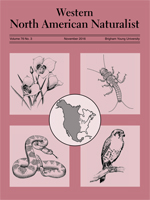In light of local population declines and poor calf survival, we investigated visual obstruction as potential elk (Cervus elaphus) calf hiding cover at birth sites. We hypothesized that female elk would use hiding cover (i.e., visual obstruction) in order to conceal their calves at the birth site and reduce vulnerability to predation. Selection of hiding cover has been well documented at calf bedding sites subsequent to parturition; however, because of variably reported results from prior studies, it is unclear whether hiding cover is selected at the immediate birth site. We estimated visual obstruction of hiding cover, measured understory vegetation height, and categorized the dominant form of hiding cover at 65 birth sites and 116 random sites within the Black Hills, South Dakota. We found no significant differences in visual obstruction, vegetation height, or selection of dominant hiding cover categories between birth and random sites within forest and grassland systems. We surmise that selection of birth sites with greater visibility was used as a strategy to increase detectability of potential human and puma (Puma concolor) disturbances, which may be hindered by understory vegetation or woody debris that obstructs visibility. This may explain why we did not detect any selection for hiding cover; thus, understory cover for calves may not be a driving factor for selection of birth sites.
How to translate text using browser tools
1 November 2016
Do Female Elk Select Hiding Cover for Their Calves at Birth Sites?
Dillon T. Fogarty,
Chadwick P. Lehman
ACCESS THE FULL ARTICLE





